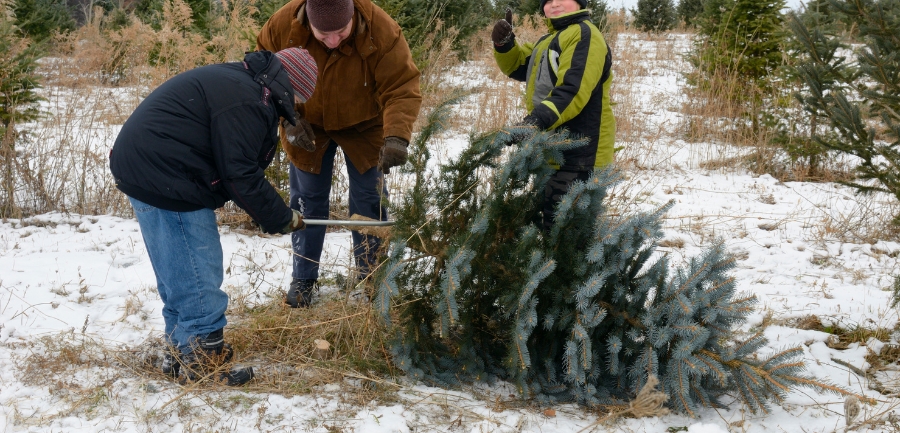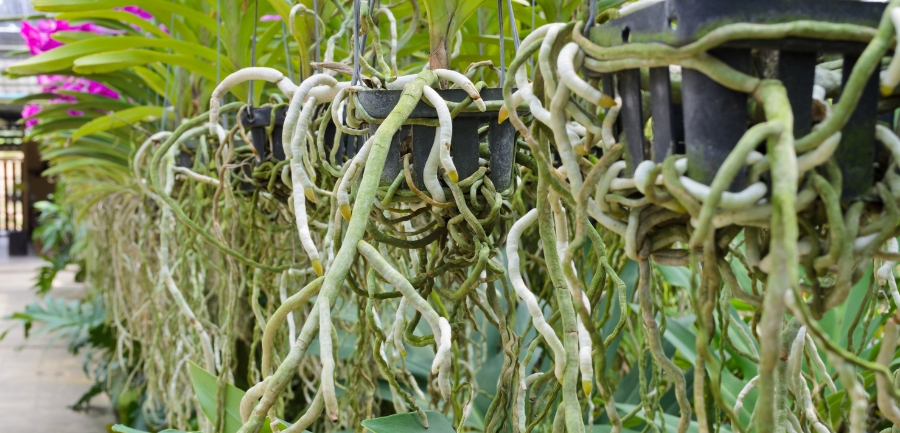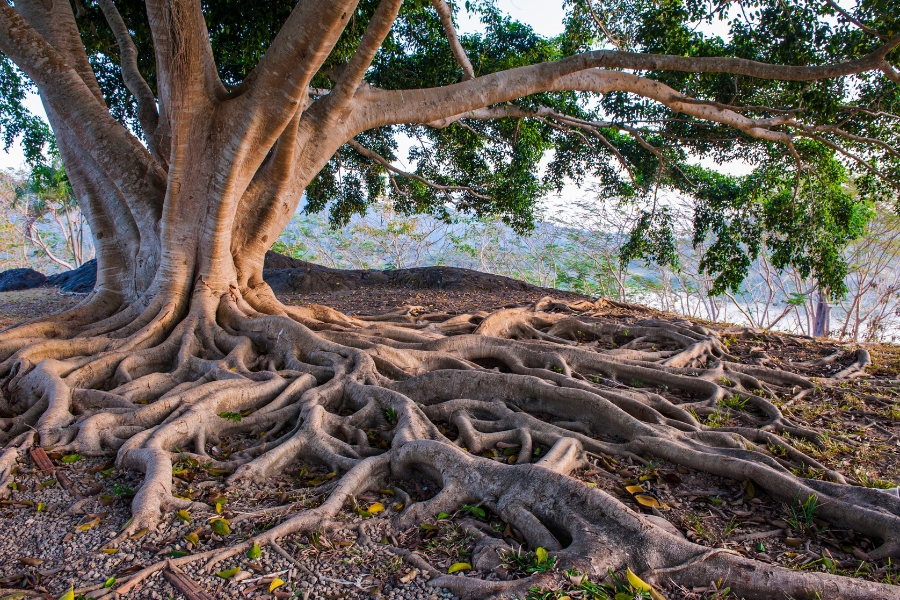Every time you step outside, you’re entering a vast world of plant wonders. From the cactus bravely standing its ground in a desert to moss giving life to a shady forest floor, plants have made nearly every corner of the planet their home. And while they come in all shapes and sizes, most of them share a common secret weapon: their roots.
Table of Contents
Roots are the unsung heroes of the plant kingdom. They’re the anchors, keeping our green friends grounded. They’re the straws, sipping up water and nutrients from the soil. And sometimes, they’re in the pantry, storing energy for leaner days. But, let’s throw a curveball: what if a plant doesn’t have roots? How does it get by? Well, gear up for a deep dive into the fascinating world of rootless plants!
A Tree Without Roots

Between the whispers of leaves and the shade they offer, trees are Earth’s quiet sentinels. But what gives them that strength and vitality? Let’s delve into the hidden world beneath – the roots.
Can a Tree Without Roots Survive?
- The Role of Roots: At the heart of a tree’s life are its roots. They anchor, nourish, and communicate, stretching sometimes even further than the tree’s canopy above.
- Bouncing Back: Trees have an uncanny ability to withstand challenges. And even when their roots face issues, many have the tenacity to survive, pulling on reserves of energy and nutrients.
- The Marvel of Clonal Trees: Clonal trees, like “Pando” in Utah, reproduce by creating genetic replicas. This interconnected family of trees shares resources, ensuring collective survival. If one tree faces hardships, its siblings lend a helping branch.
Can You Plant a Christmas Tree Without Roots?

- Journey through Time: The cherished tradition of lighting up a Christmas tree began in 16th-century Germany. Over the years, it has intertwined with diverse cultures, resulting in various customs and practices.
- Keeping the Festive Spirit Alive: Picked a Christmas tree sans roots? No fret. Just ensure:
- It’s consistently watered.
- It’s positioned away from direct heat.
- Eco-friendly Celebrations: As the world leans into sustainability, options like lifelike artificial trees and tree rentals are gaining popularity. They offer the best of both worlds: holiday spirit and Earth-friendly choices.
Do All Plants Have Roots?

Hold onto your garden gloves! We’re about to unearth some cool facts and plant surprises.
From the Mighty to the Modest: Plants of All Shapes and Sizes
- The Tall Tales: Like the gigantic Redwood trees that pierce the skies.
- Medium Marvels: Think sunflowers, turning their heads to catch every ray.
- Tiny Treasures: The delicate moss blanketing forest floors.
Roots: Not Always What You Expect
- The Obvious: Carrots, for instance. Ever eaten one? You’ve had a root meal!
- The Subtle: Orchids have delicate, hair-thin roots that can be hard to spot but play a crucial role.
Air Plants and Their Rootless Wonders

- Tillandsia: The superstar of air plants, it doesn’t need soil. It absorbs moisture and nutrients through its leaves. A perfect plant for your floating garden dreams.
Which Water Plant Has No Roots?
Beneath the shimmering surfaces of ponds and lakes lie mysteries waiting to be discovered.
The Vast World of Aquatic Plants
- Deep Dwellers: Like the Seagrass, swaying at the ocean’s depths.
- Surface Floaters: Water hyacinths, for example, that paint water surfaces purple.
- River Runners: Plants like riverweed that thrive in running waters.
Duckweed: The Rootless Wonder
- Lemna Minor: Commonly known as duckweed. These small, green floating plants thrive without deep roots. They take in nutrients directly from the water, living the ultimate minimalist lifestyle.
Rootless Wonders and Their Aquatic Roles
- Feeding the Fish: Many small aquatic creatures munch on them.
- Natural Sunblock: They provide shade, ensuring waters don’t get too hot.
- The Oxygen Boost: These plants help oxygenate the water, ensuring aquatic life thrives.
The World of Plants Beyond the Common

Sometimes, stepping away from the conventional reveals a universe of diversity. Here are some more concrete examples of various plant species and their unique attributes.
Root-Defying Wonders: Plants That Go Against the Norm
- Tillandsia Xerographica: This air plant is often called the “King of Air Plants.” Its curly, silver leaves can absorb water from humidity in the air, making it a no-soil, low-maintenance beauty.
- Rafflesia: Found in Southeast Asia, this parasitic plant doesn’t photosynthesize like other plants. It takes nutrients from the Tetrastigma vine. It’s also known for producing the world’s largest flower, which unfortunately doesn’t have the most pleasant odor.
- Bromeliads: Not all bromeliads are rootless, but their roots primarily anchor them to other plants or substrates. Their leaves form a reservoir to store water, and this is where they also capture nutrient-rich debris.
The Aquatic Wonders: Not Your Average Pond Plants
- Wolffia: This is even smaller than duckweed and holds the title of the smallest flowering plant. Often compared in size to a grain of rice, it’s a rootless wonder, floating effortlessly on water surfaces and serving as a vital food source for waterfowl.
- Bladderworts (Utricularia): An intriguing carnivorous plant that thrives in freshwaters. They possess tiny bladder-like structures that trap and digest tiny aquatic creatures. Interestingly, they don’t rely on roots for nutrient absorption.
- Aldrovanda vesiculosa (Waterwheel Plant): This is a rootless, free-floating aquatic plant. Fascinatingly, it’s carnivorous. It catches small aquatic invertebrates using its snap-trap mechanism – similar to the terrestrial Venus flytrap.
Plants with Unconventional Root Systems

We’ve all heard the saying “to take root.” But in the fascinating realm of botany, some plants have tossed the rulebook out the window. Let’s embark on a journey through the world of unconventional root systems.
Parasitic Plants: The Sly Sippers of the Plant Kingdom
You wouldn’t typically associate the word ‘parasite’ with the green wonders we love. However, some plants have taken the survival route that doesn’t involve photosynthesis or roots, at least not in the traditional sense.
- Mistletoe (Viscum album): This festive favorite actually extracts water and nutrients from its host tree. While it does have roots, they are haustorial roots that penetrate the host’s bark and draw sustenance from it.
- Broomrape (Orobanche): Almost alien in appearance, these plants lack chlorophyll and depend entirely on their hosts for nourishment. Latching onto the roots of other plants, they extract what they need to grow and reproduce.
Mycorrhizal Associations: Nature’s Underground Network
Imagine a vast, intricate web connecting plants below the soil. This isn’t a fairy tale; it’s the magic of mycorrhizal associations.
- Pine Trees and Fungi: Pines form ectomycorrhizal associations, where the fungus wraps around the tree’s roots. This symbiotic relationship allows the tree to absorb more water and nutrients, while the fungus benefits from the tree’s photosynthesis products.
- Orchids: These beauties often begin life as tiny seeds without much-stored food. They form a relationship with fungi, which provide them with the necessary nutrients. As they grow, some orchids repay the favor by offering sugars to the fungus.
Desert Plants: Masters of Drought Resistance
It’s scorching, water is scarce, but life finds a way. Desert plants have evolved root systems that help them make the most of the little moisture they receive.
- Mesquite (Prosopis): With roots that can reach depths of 50 feet or more, mesquites tap into groundwater, ensuring their survival during the harshest droughts.
- Creosote Bush (Larrea tridentata): This plant’s roots are both deep and widespread, covering an expansive area. This dual strategy allows it to absorb surface water quickly during rare rains, while also tapping into deeper reserves when necessary.
Alternative Methods of Nutrient Absorption
As humans, we’ve come up with various innovative ways to source our nutrition – think vitamin supplements, protein shakes, and even IV drips. But plants, with their unyielding drive to thrive, have been ahead of the curve for millennia. Let’s explore some of these alternative pathways to nutrition that plants have adopted.
Going Beyond Soil: Nature’s Many Avenues of Nourishment
Soil has always been perceived as the buffet for plants. But some plants, even the innovators, have decided to look elsewhere for their nutritional needs.
- Sundews (Drosera): Part of the carnivorous clan, sundews lure, capture, and digest insects using their sticky, tentacle-like structures. This becomes a vital source of nutrients, especially in nutrient-poor soils.
- Epiphytes: Plants like the staghorn ferns or some orchids aren’t rooted in the ground but find their home clinging to other plants. They gather nutrients from rainwater, the air, and debris that accumulates around them.
Foliar Feeding: Plants’ Direct Line to Nutrition
Plants have a knack for efficient nutrient intake, and some have evolved to absorb directly through their leaves.
- Tomatoes: Many gardeners practice foliar feeding on tomatoes, where a nutrient solution is sprayed directly onto the leaves. This method can provide rapid nutrient uptake, especially when soil conditions aren’t optimal.
- Coffee Plants: In large coffee plantations, foliar feeding is sometimes used to provide these plants with necessary micronutrients, ensuring those coffee beans get all the nutrients they need to develop fully.
The Gentle Embrace of Symbiotic Relationships
In the vast dance of nature, few things are as beautiful as mutual give-and-take. Plants, in their quiet wisdom, often engage in symbiotic relationships that ensure both parties benefit.
- Legumes and Rhizobia: Leguminous plants, like peas and beans, have a fantastic alliance with Rhizobia bacteria. These bacteria set up shop in the plant’s root nodules and convert atmospheric nitrogen into a form the plant can use. In return, the bacteria get carbohydrates from the plant.
- Mycorrhizal Plants and Fungi: We touched on this earlier, but it’s worth reiterating. This partnership ensures plants get essential minerals like phosphorus and zinc from the fungi, while the fungi get their fill of carbohydrates.
Conservation and the Future of Rootless Plants

The delicate balance of our ecosystem is in jeopardy in today’s rapidly evolving world, where urban growth and habitat destruction are major concerns. Among the most vulnerable are the plants that have already defied conventions in their growth – the rootless wonders. Understanding and ensuring their survival is crucial not just for biodiversity but for our own understanding of resilience.
The Modern Struggles of Rootless Plants
Evolution has led these plants down a path less trodden, but with our modern world’s challenges, their unique lifestyle can become a double-edged sword.
- Habitat Loss: Many rootless plants, like epiphytes, rely on specific host plants or habitats. The destruction of rainforests, wetlands, and other ecosystems can pose a direct threat to their survival.
- Pollution: Air plants absorb nutrients from their surrounding environment. In areas with high pollution, they can absorb harmful chemicals, impacting their health and growth.
Conservation Efforts: Nature’s Safety Nets
Fortunately, awareness about the importance of these unique species is growing, leading to more concerted conservation efforts.
- Protected Areas: National parks, sanctuaries, and conservation zones are being established worldwide to protect native habitats, ensuring a safe haven for rootless and other vulnerable plants.
- Seed Banks and Botanical Gardens: Institutions are collecting and preserving seeds and specimens, safeguarding the genetic diversity of these species and offering hope for potential future reintroductions.
Citizen Science: The Power of Community in Conservation
Every individual has a role to play in the larger narrative of conservation, and citizen science embodies this philosophy.
- Plant Identification Apps: With smartphones being ubiquitous, apps that help identify and log plants are becoming popular. By using these apps, the general public can contribute to large databases, assisting scientists in understanding plant distribution and changes in populations.
- Community Projects: Local groups often take up restoration projects, reintroducing native plants, cleaning up habitats, and monitoring plant health. Such grassroots movements can make a substantial difference in conservation outcomes.
To Wrap It Up!
That’s all there is to it, guys. Unique plants like those without roots serve as a reminder that the natural world is full of surprises. It is up to us to ensure that these peculiar green people have a fair shot in the modern world. So, next time you spot an epiphyte hanging out or hear about a local conservation project, take a moment to appreciate it and perhaps even join the cause. After all, the world’s a lot more fun with its unexpected marvels intact. Let’s keep it that way!
FAQs
Can a tree survive without roots?
Trees rely on roots for water, nutrients, and stability. Without roots, a tree cannot sustain its growth and will eventually die.
What will happen to a tree without roots?
Without roots, a tree loses its anchor, cannot absorb essential nutrients, and will ultimately wither, weaken, and die.
What is an example of a rootless plant?
Duckweed, found floating on freshwater, is a classic example of a rootless plant, that derives nutrients directly from the water.
What to do with a plant that has no roots?
For plants that lost roots, consider propagation methods like stem cuttings or provide a supportive medium to encourage new root growth.

